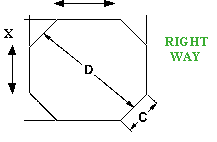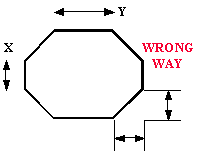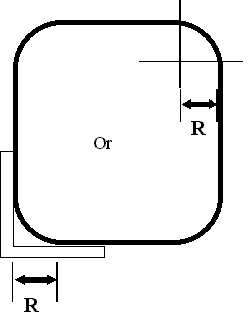|


Pages available
under the page your currently at, are below.
General Categories Available below
| |
| SQUARE CORNER
Square corners are the easiest. All you need to do is
tell us they are square. Don’t make us assume they're square. If you don’t
specify we may assume you forgot to check. Valuable production time would
be lost while we try to contact you to find out if you in fact want your
corners square. |
 |
 |
CUT CORNER
To measure a cut corner, assuming it is on a perfect 45
degree angle (most cut corners are), simply measure its length “C”.
If you try and measure to an invisible hypothetical square corner (as
illustrated in the wrong way diagram). We will have problems, it’s
non-standard. However on rare occasion the cut corner is not a 45 degree
angle, at which point including these measurements can help us determine
the angle. Again, in any case, if you also provide a diagonal “D”
measurement and/or the measurements of the sides “X” and “Y”, we
can confirm your measurement to reduce any possible errors. If you error
on this measurement, be on the SMALL side. If you measure your cut corner
as being 13.5” then you may want to reduce the measurement to 13” to
be on the safe side. If you go to 14” it will not fit right or will be
to snug. |
 |
| ROUNDED CORNERS
This is the trickiest measurement. Some times it is hard to be
definitive as to exactly what the radius is. Going on the small side of
what you think it is again is safer than having to large of a measurement.
The radius is measured the same way as the “wrong way” of measuring a
cut corner “Z”. Measure from the start of the curve out to the
hypothetical invisible cut corner. A framers square “S” can also be of
great assistance here. |
 |

Where the two line intersect at the top right of this diagram from the edge
is the radius.
Or Use a framers square as illustrated at the bottom right to determine the
radius.
|